So you’re thinking about Portugal? Awesome choice! Let me tell you why the Douro Valley needs to be on your radar. This guide to Douro Valley is your ticket to wine paradise you never knew you needed!
Look, you just can’t skip northern Portugal without checking out this incredible valley. Trust me, even the most stunning Instagram pics don’t do it justice – you have to see this place with your own eyes.
Picture this: the Douro River snaking through crazy–beautiful hills, vineyards clinging to impossibly steep slopes, charming quintas with views that’ll make your jaw drop, mouthwatering local grub, and port wine that’ll spoil you forever.
Yeah, that’s just the start of why this place rocks. Not totally convinced? Keep reading – I bet this guide will change your mind!
I’m throwing everything you need to know about this gorgeous corner of Portugal right here. Enjoy!
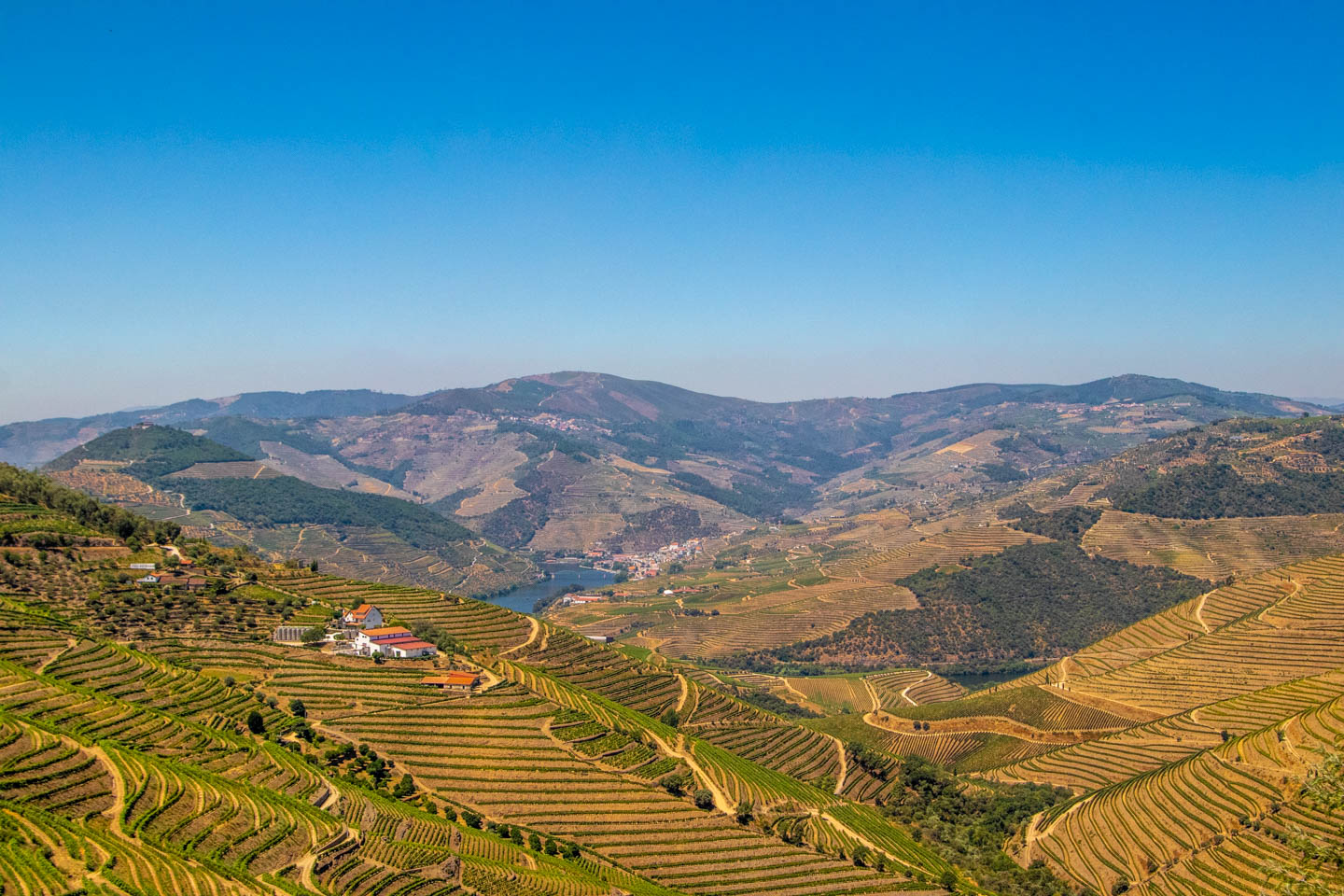
Douro Valley: Where Wine Gets Serious
The Douro Valley (locals call it Alto Douro) follows the Douro River, a major waterway that stretches almost 560 miles through northeastern Portugal.
Fun fact: This place is actually the world’s oldest officially marked wine region! Winemaking here goes way back to Roman times (3rd-4th centuries), which is why UNESCO slapped a World Heritage label on it back in 2001.
The valley’s famous for its killer port wine. Back in the day, they’d ship port by boat to Vila Nova de Gaia’s cellars for aging and bottling.
These days though, many places are aging and bottling their port right in the valley – even better for us wine lovers who want the full experience!
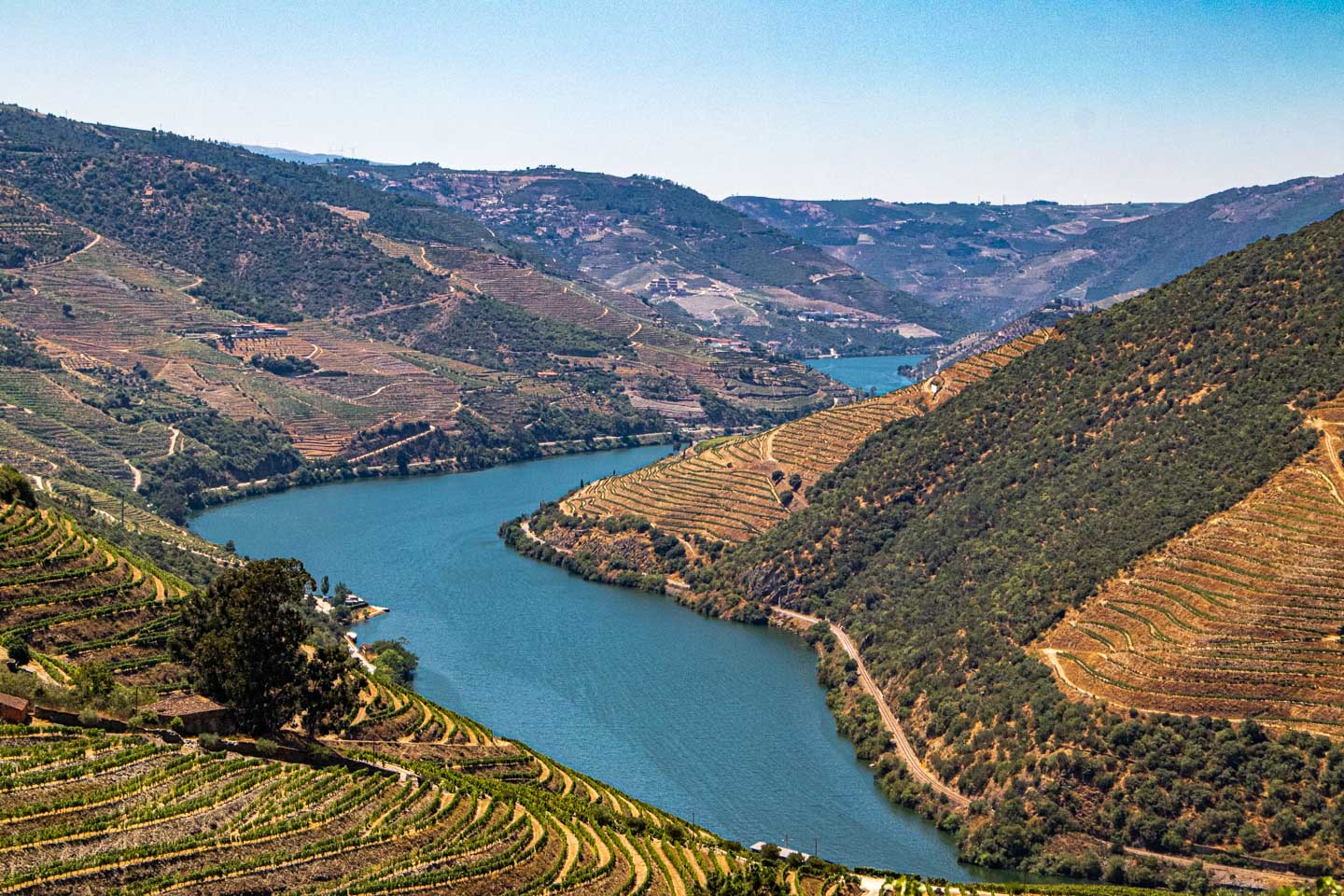
How Port Wine Became a Thing
Port wine has this cool connection to England.
Here’s the deal: When the English couldn’t get their hands on French wine due to some political drama, they started looking elsewhere.
They landed in Porto and totally fell for the local wines. Only problem? The wine would often go bad during the long boat trip back to England.
So what did they do? They started adding strong alcohol to stabilize it. Boom – port wine was born! That’s why it has that rich, sweet kick that’s unlike anything else.
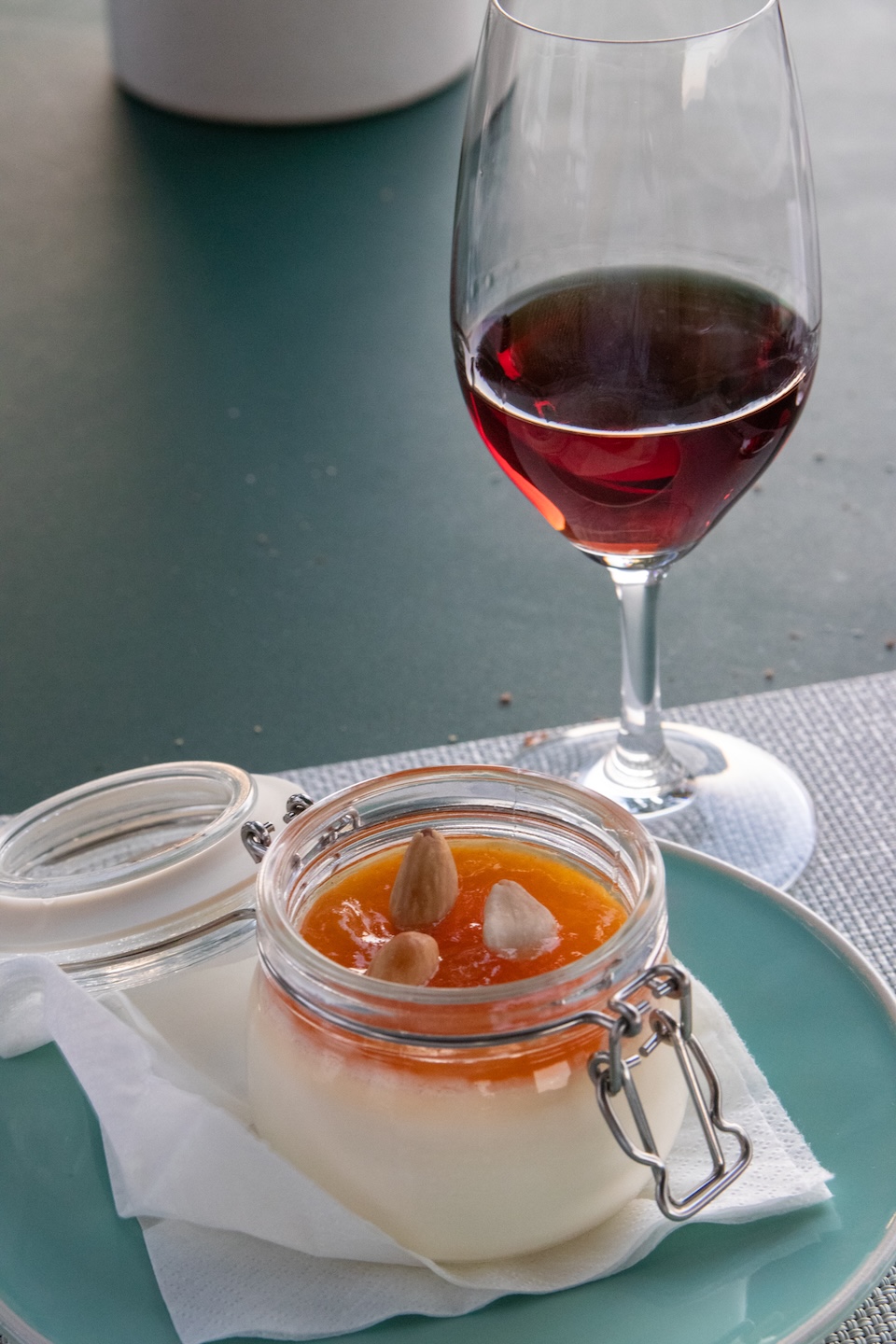
Three Totally Different Parts of the Valley
The Douro Valley breaks down into three distinct zones:
- Baixo-Corgo is where you’ll find Peso da Régua, the regional hub. It’s the wettest and coolest part, growing grapes that end up in your everyday ruby and tawny ports.
- Cima-Corgo, centered around the super-cute town of Pinhão, focuses on fancy grape varieties for high-end tawny and vintage ports.
- Douro Superior sits furthest east and has the driest, hottest climate. It’s still a bit under the radar compared to the other areas.
Beyond the famous port, Douro makes some seriously good table wines too.
Red varieties include grapes with names you’ll butcher like Touriga Nacional, Tinta Roriz, and Bastardo. On the white side, you’ve got Donzelinho Branco, Malvasia Fina, and others.
The perfect growing conditions here aren’t just good for grapes – olives and almonds thrive too. Try the local olive oil – it’s ridiculous how good it is!
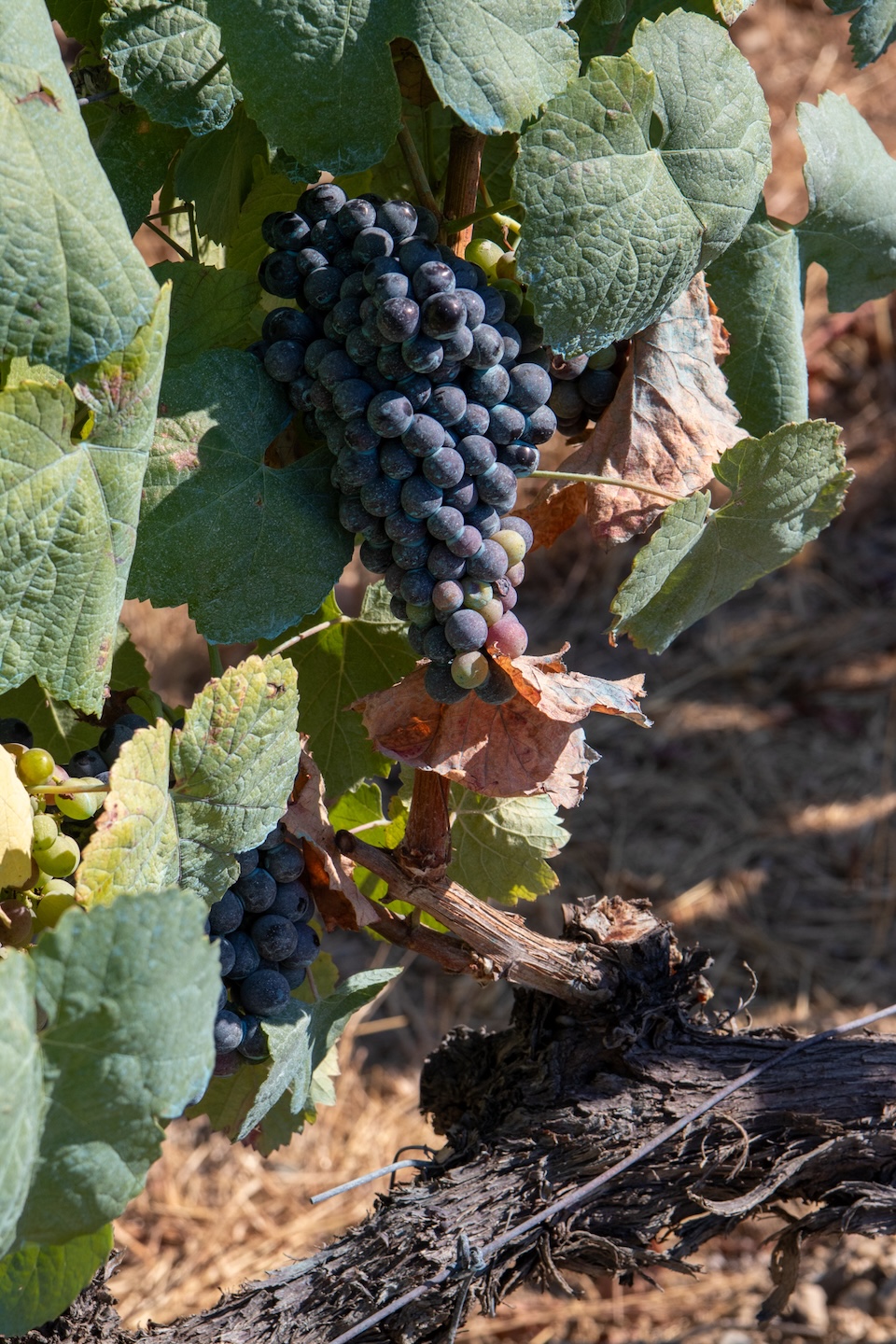
When to Go
The Douro Valley’s pretty amazing year–round, but timing matters depending on what you’re after.
- Late spring (May-June) and early fall (September-November) rock for hiking and biking. The weather’s nice, though you might catch a few showers. Pack a light jacket just in case.
- Summer (July-August) brings the heat, with temps often hitting above 85°F. Perfect if you’re into that sun–soaked vibe!
- September is the jackpot for wine geeks. It’s harvest time, and tons of quintas let visitors join in on grape picking and the traditional grape stomping (they call it “lagaradas“). How cool is that?
We hit up the valley in July and scored sunny, warm weather the whole time. Zero complaints!
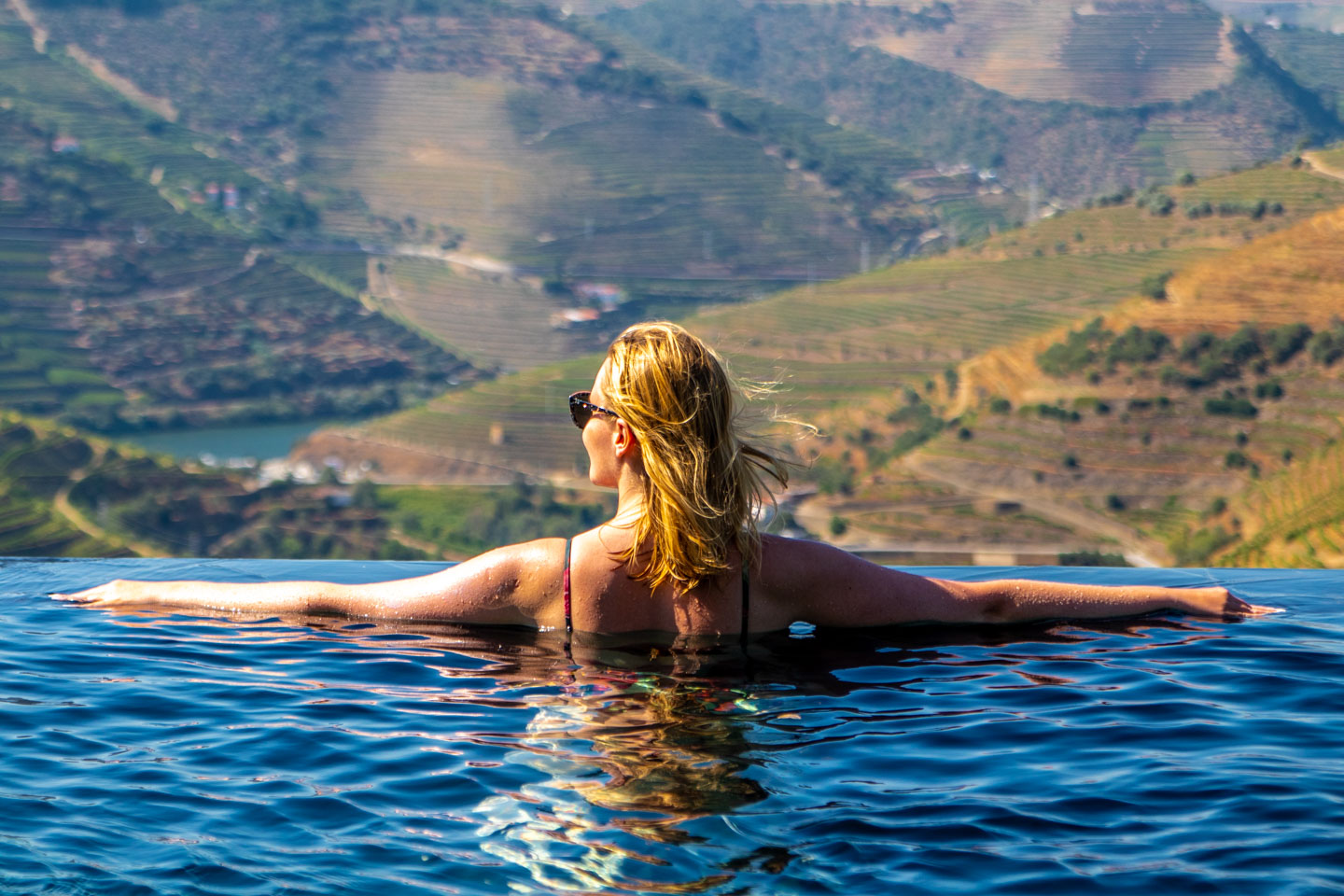
Getting There
Alright, so you’re in Porto and wondering how to get to this wine paradise? You’ve got options:
- Train or Bus: Easiest on the wallet. The train ride from Porto to Pocinho takes about 3.5 hours and serves up some killer views. Just know you might need taxis to reach the more out-of-the-way vineyards.
- Organized Tours: Local travel companies run vineyard tours all over the valley. Yeah, it’s pricier, but it includes all the wine tastings and handles transportation. Perfect if those twisty mountain roads freak you out.
- River Cruises: For something different, hop on a scenic cruise up the Douro from Porto. Some trips combine this with winery visits.
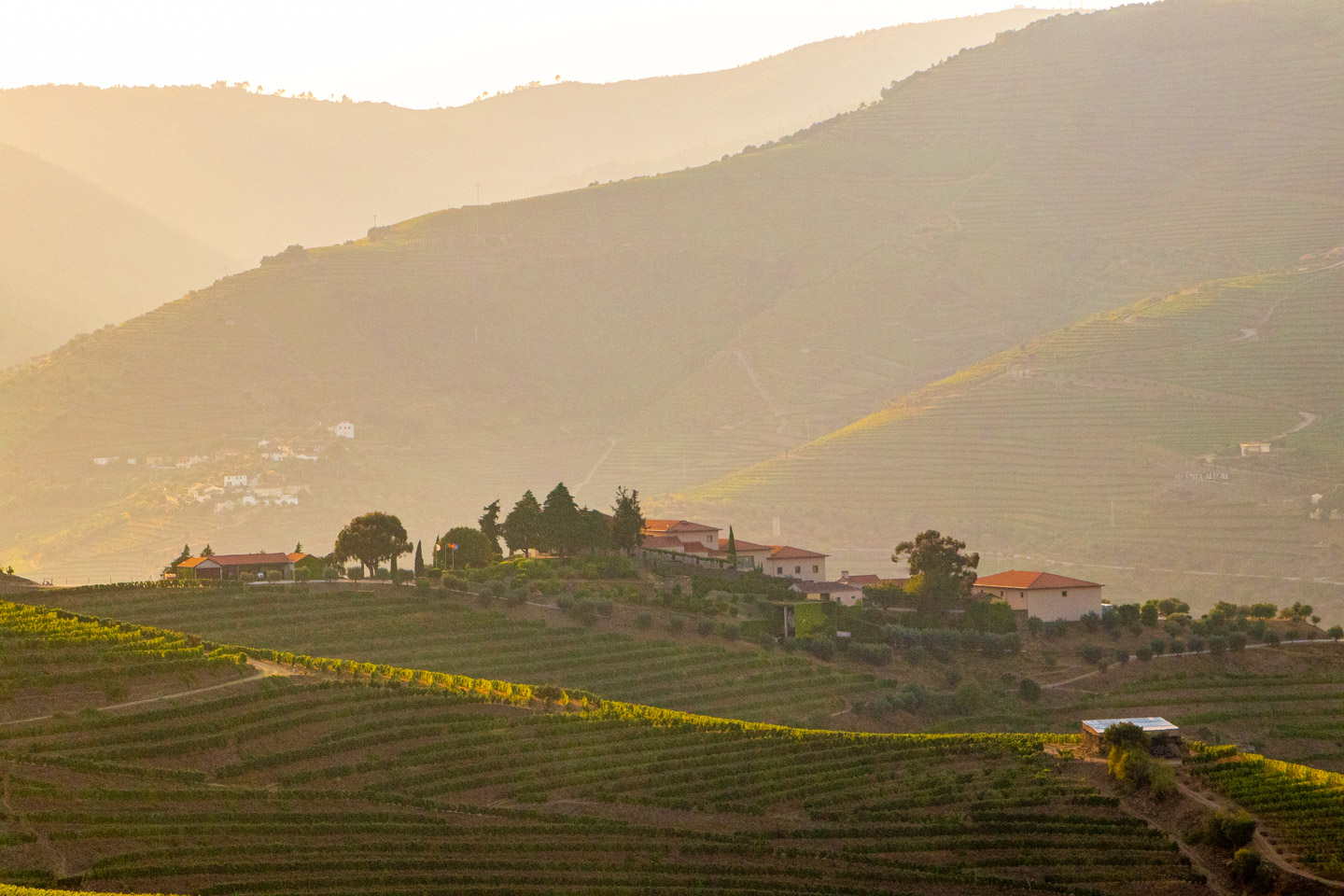
Our take? Rent a car (about 35 euros a day) and stay for a few days.
The drive from Porto is only about 1.5 hours, and having your own wheels lets you explore at your own pace, hit up random viewpoints, and check out charming little towns.
Just make sure to stay at one of those gorgeous quintas for private wine tastings and tours.
Pro tip: Drive at least part of the scenic route along the Douro (N108 and then N222). People call it one of the world’s most beautiful drives, and for once, that’s not overhyped!
Just be ready for narrow, windy roads – not great for nervous drivers.
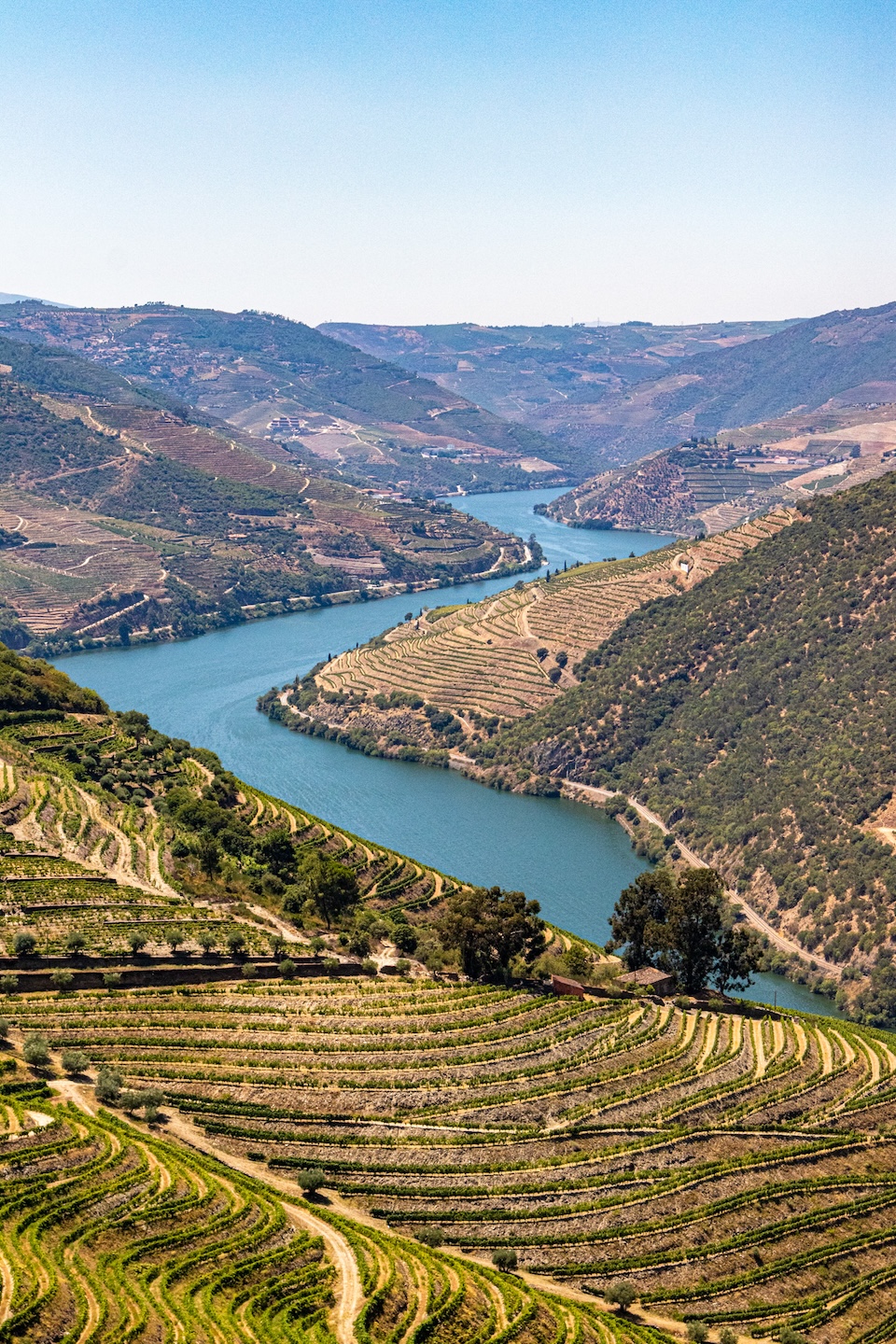
Where to Stay
The Douro region has places to stay for every budget:
- Hostels if you’re watching your euros (from 20€)
- Decent mid-range hotels (from 60€)
- Fancy riverfront resorts if you’re splurging (from 250€)
- Super-cute rural farms nestled in vineyards (from 70€)
If you arrive by train, think about staying in towns like Peso da Régua, Pinhão, Provesende, or São João da Pesqueira.
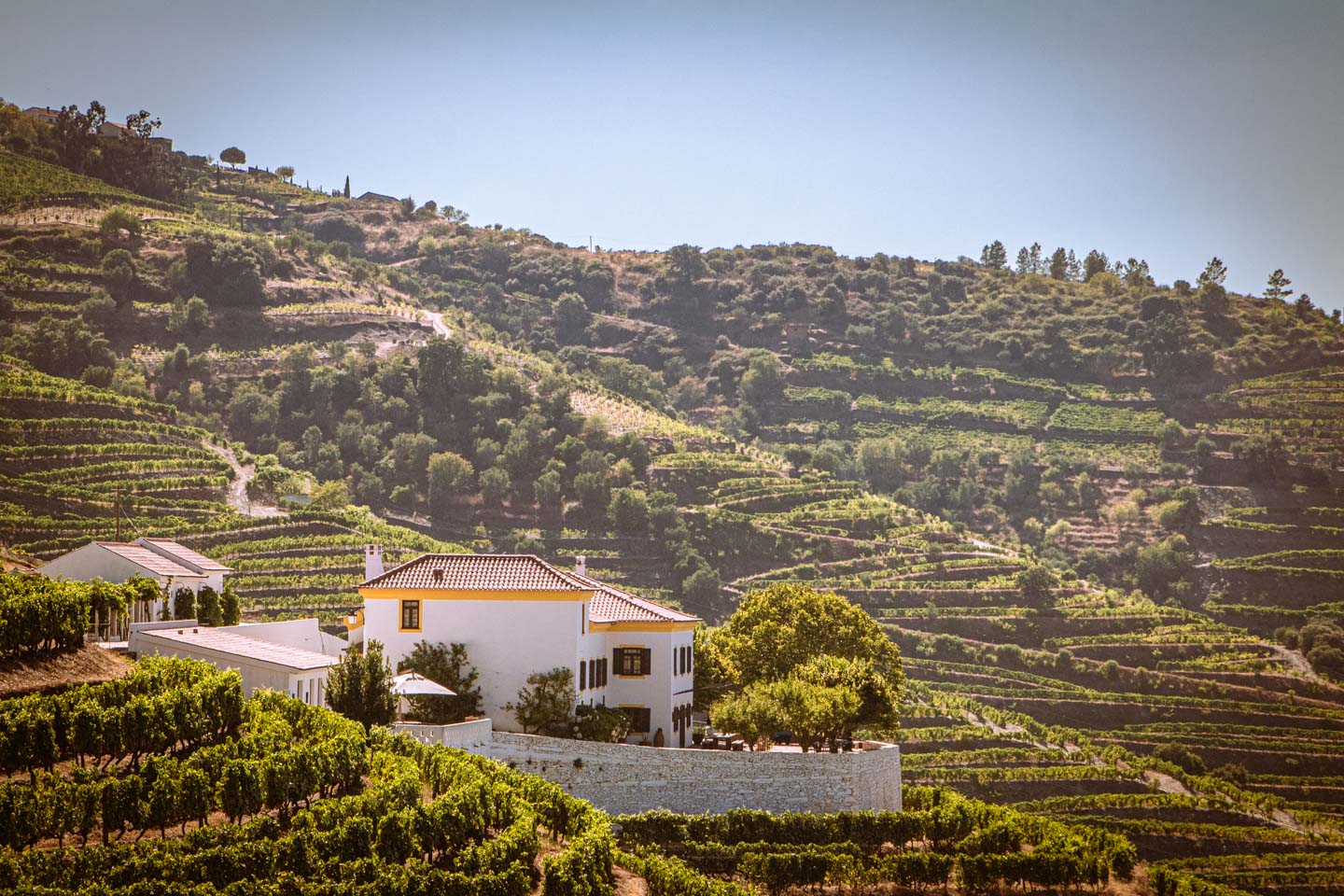
Town stays put you close to museums, tons of restaurants, and local vibes. The downside? You’ll need taxis to hit most vineyards.
Our recommendation? Grab a car and stay at one of the amazing quintas in the countryside. Nothing beats chilling in nature with a glass of port while taking in those ridiculous views.
For us, the perfect setup included an infinity pool overlooking the valley and killer local food. That’s how you do vacation right!
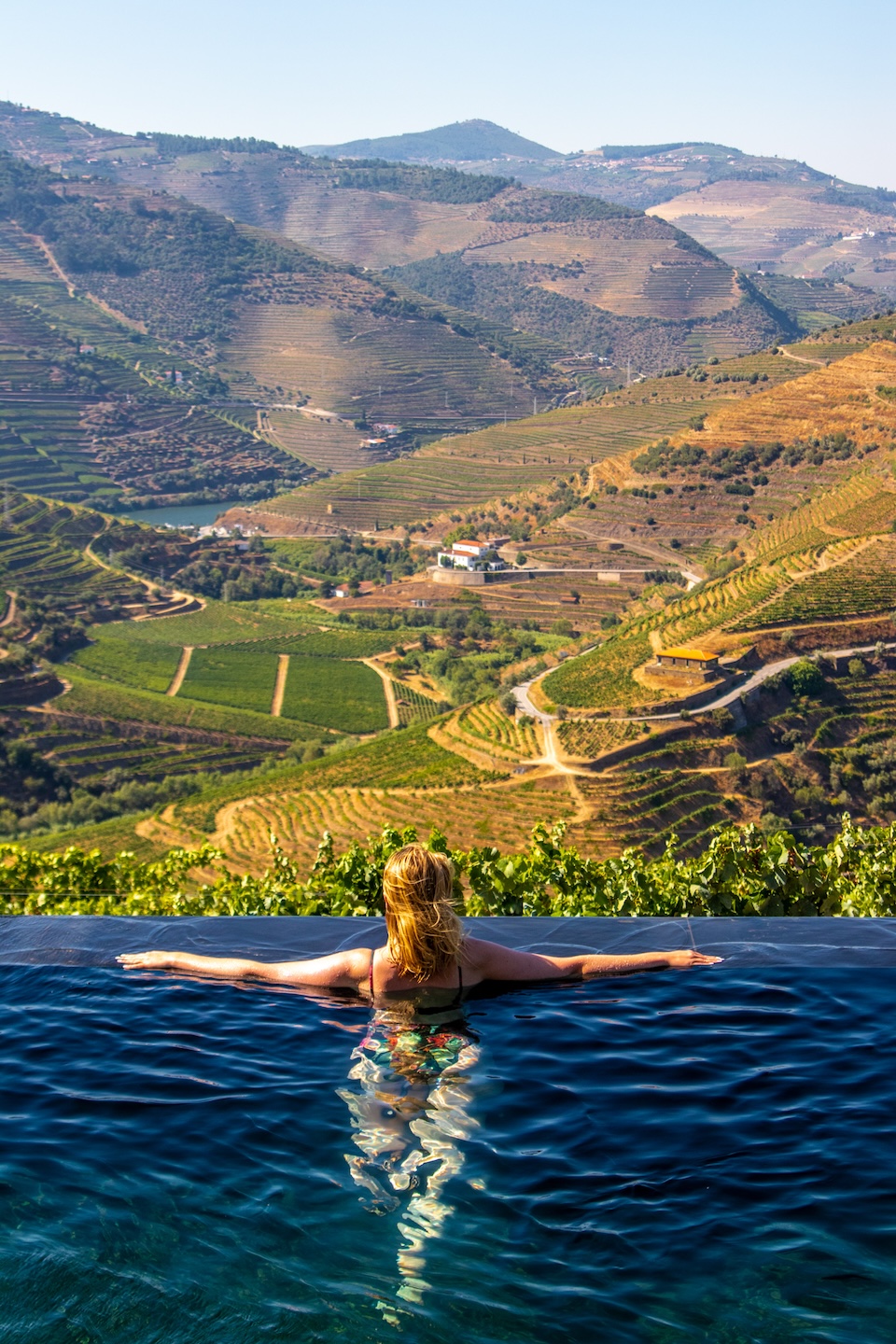
Our Spot: Quinta da Côrte
With so many awesome quintas scattered across the Douro Valley, picking just one was tough. We ended up at Quinta da Côrte in Valença do Douro – and holy cow, what a choice!
From day one, we were blown away by the vibe and service. You can choose to stay in either a beautifully restored old mansion or a converted farm building right next door.
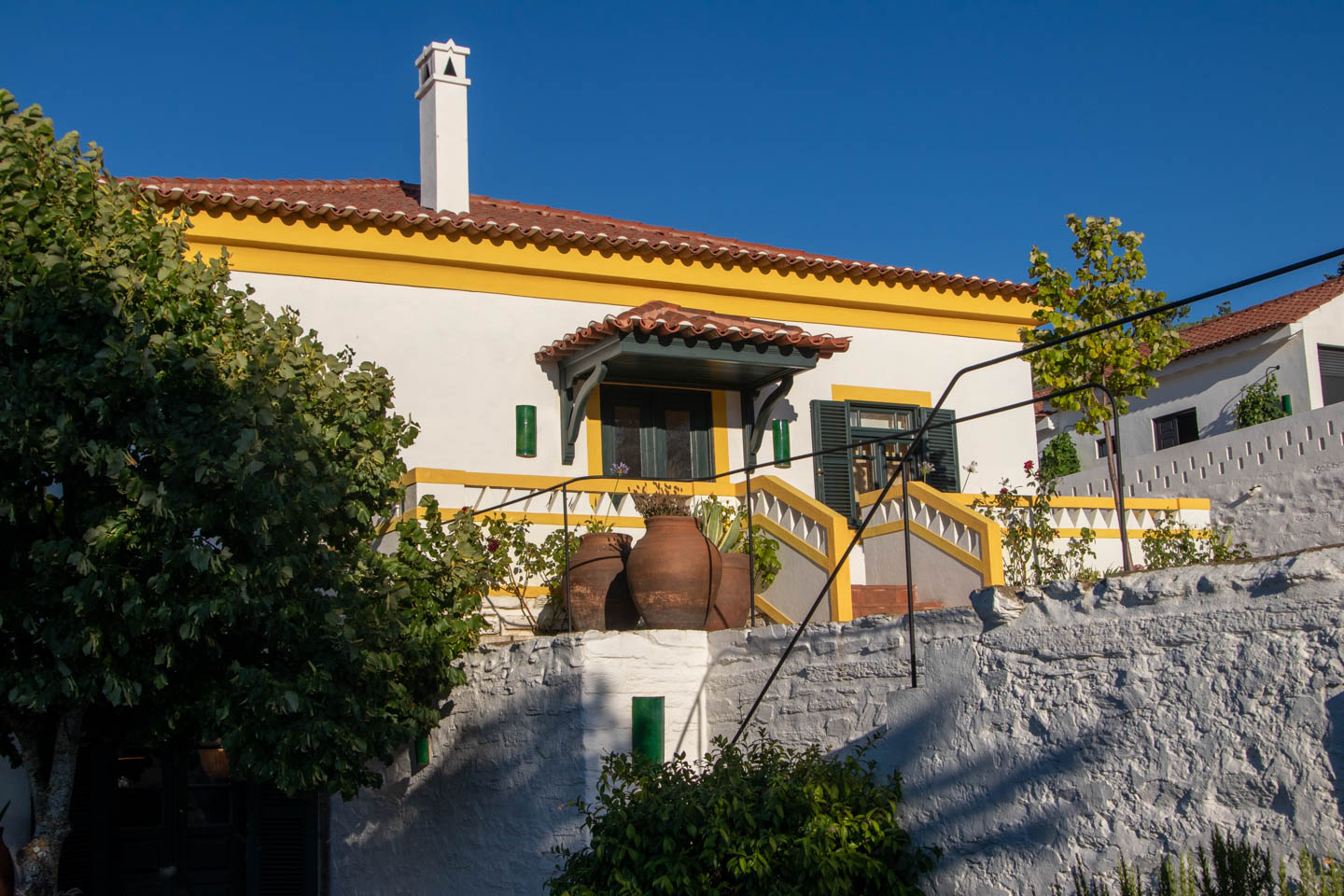
The whole place perfectly balances old–school charm with modern touches, thanks to this French architect dude, Pierre Yovanovitch.
Guests can lounge by the pool or hang in the stylishly decorated common areas – perfect for reading or afternoon drinks.
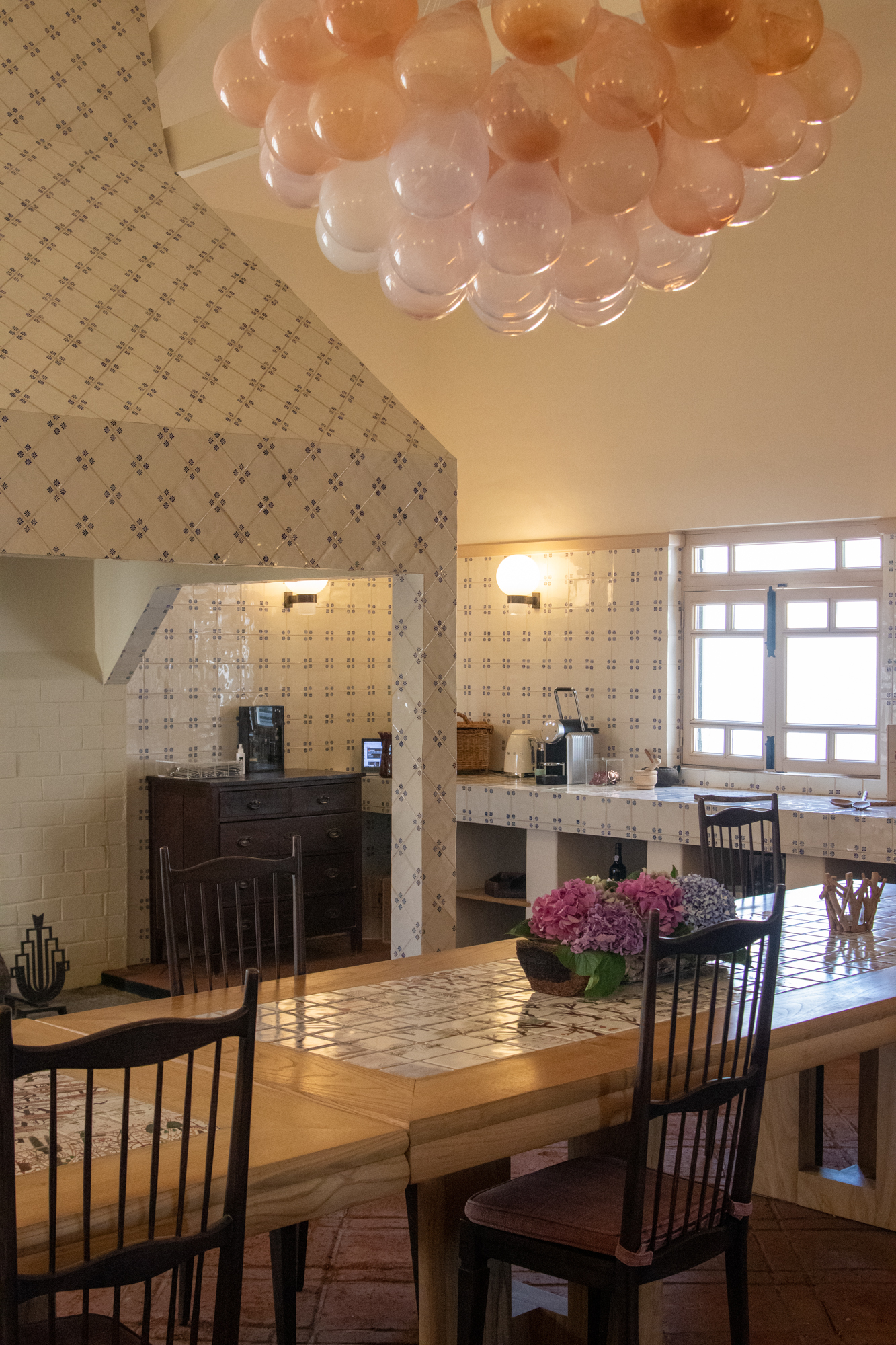
Every morning starts with an insane breakfast on the terrace with views for days.
We’re talking local cheeses, homemade jams, cured meats, and fresh bread, plus coffee, tea, fresh-squeezed juice, and seasonal fruits. Breakfast goals, seriously.
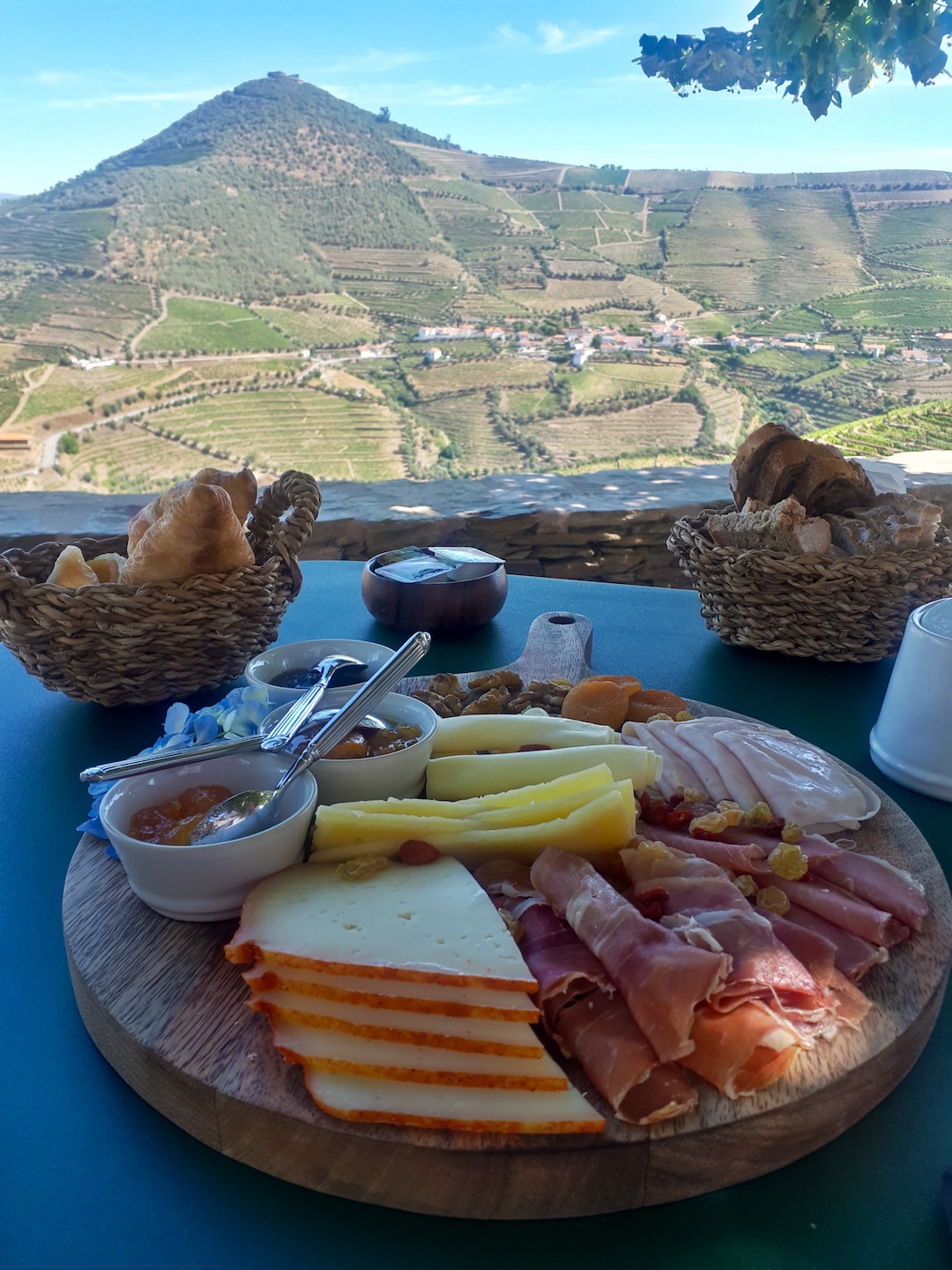
The quinta doesn’t stop at breakfast either – you can grab lunch during the day or an incredible three-course dinner in the evening. The dinner would make even food snobs happy!
Each day brings a different menu, so you get to try all sorts of local and international dishes.
From super-fresh seafood to perfectly cooked meats, everything comes with their own olive oil and amazing local wines.
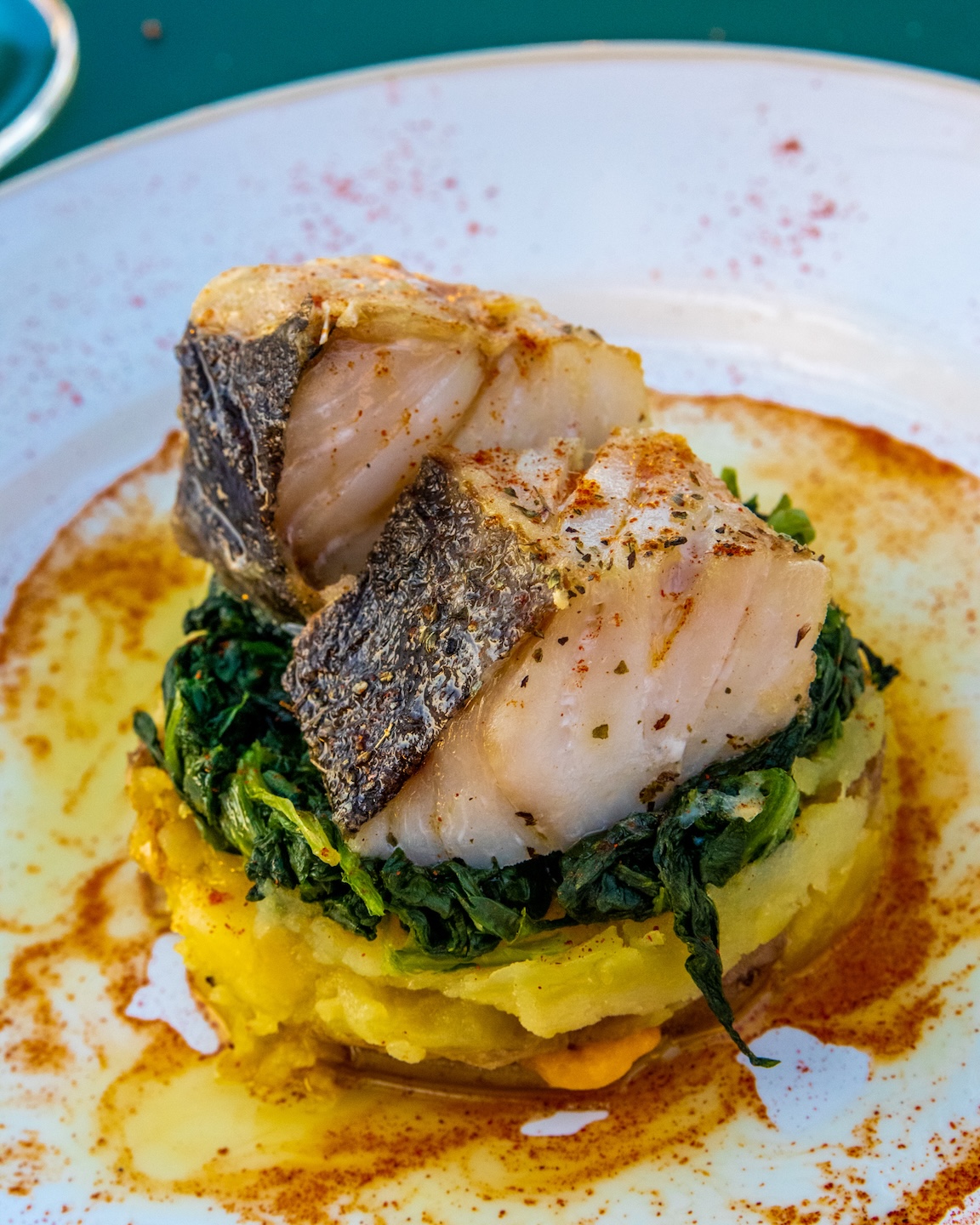
Every dinner wraps up with a killer dessert (the pics don’t lie!) and the highlight of the evening – a guided vineyard tour with free wine tasting.
What more could you want? We were over the moon with our stay!

Best Things to Do in the Douro Valley
1. Hit Up Vineyards & Get Your Port Wine Education
You can’t do the Douro Valley without exploring vineyards and tasting some port wine. It’s like, the whole point!
With tons of wine estates to choose from, you can check out everything from tiny family operations to big-name international brands.
Real talk: don’t skip the smaller, lesser–known places. Bigger doesn’t always mean better – often these small producers make some of the most amazing wines, and your visit helps support local businesses.
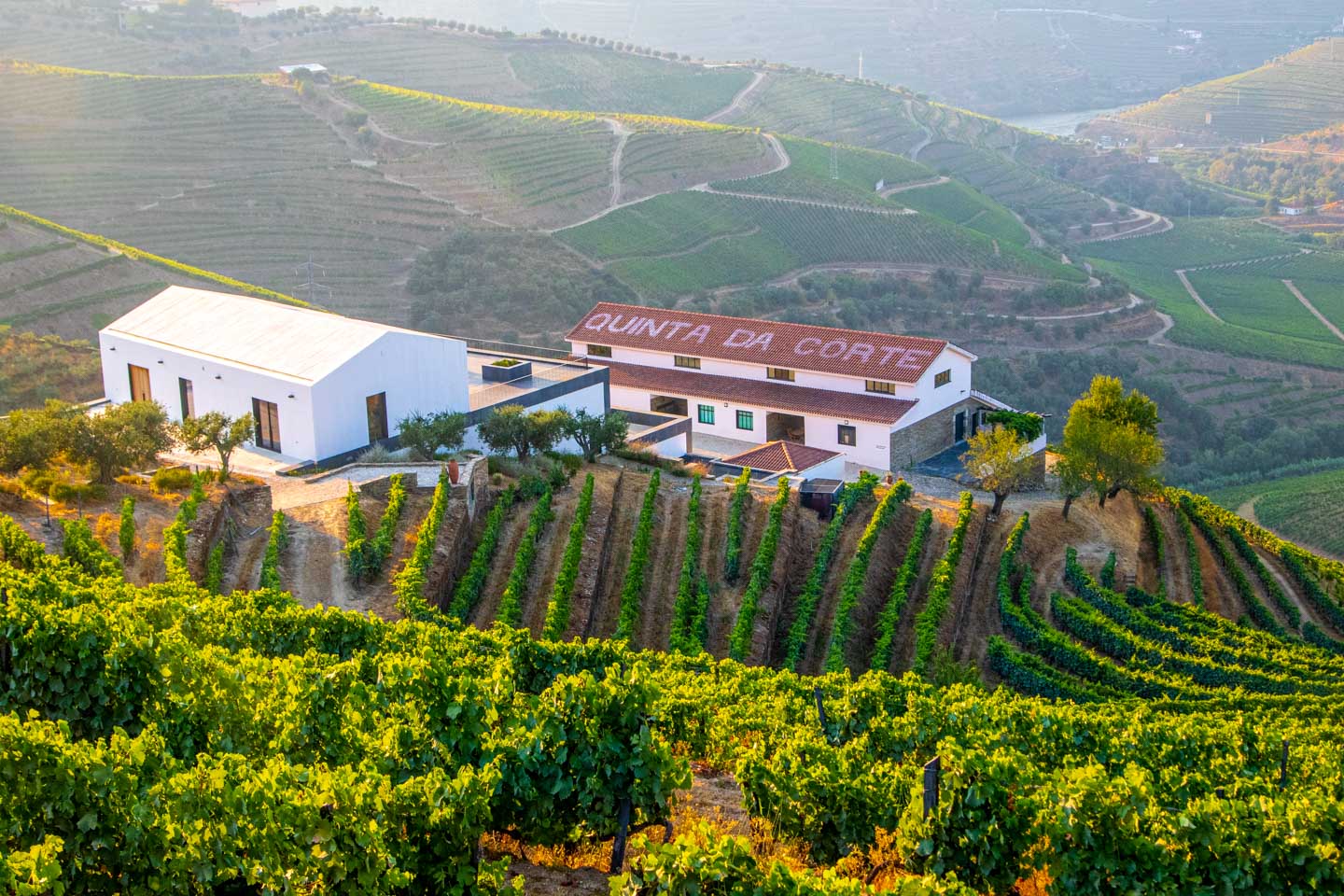
No matter which vineyard you pick, you’re in for a treat. Not only will you taste fantastic wines, but you’ll also learn how port is made. If you visit in fall, you might even get to join the grape harvest!
Port wine gets its signature sweetness when they add strong alcohol (called aguardente) to stop fermentation.
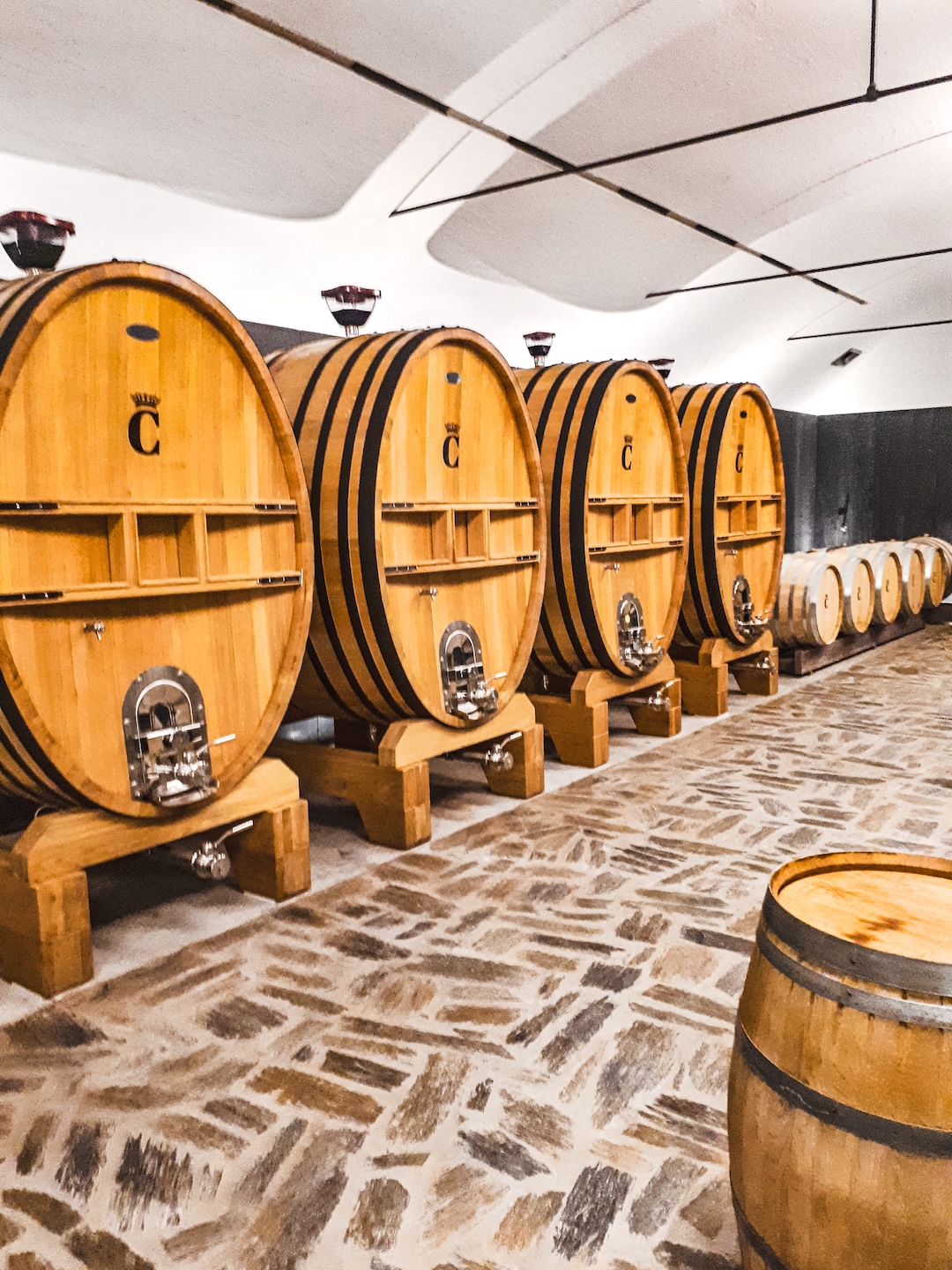
Different types – ruby, tawny, vintage, and LBV – vary by color (red, white, pink), how they’re blended, vintage year, barrel aging (some barrels are over 100 years old!), and how long they age.
After trying a bunch, we fell in love with 20-year-old tawny port – it’s slightly drier than others and absolutely delicious.
Some killer vineyards to check out: Quinta de la Rosa, Quinta do Crasto, Quinta da Pacheca, Quinta Nova, Quinta do Vallado, and our awesome host, Quinta de Côrte.
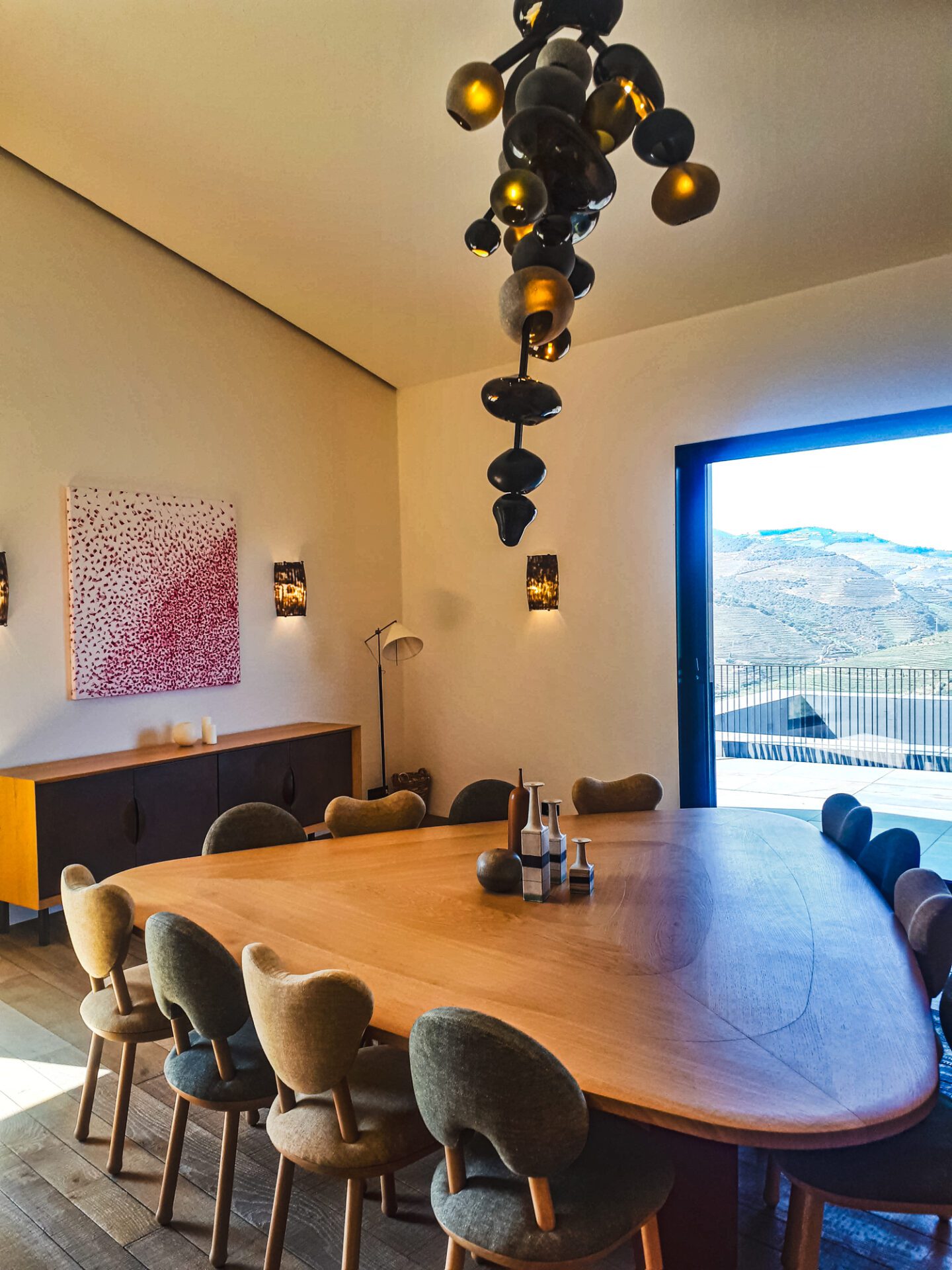
2. Cruise the River
Need a break from all that wine? Jump on a scenic cruise along the Douro! Boats run between Porto and Barca de Alva, a cute town right on the Spanish border.
You’ve got plenty of options:
- Quick 1-2 hour trips
- Half-day or full-day cruises
- Multi-day tours mixing cruising with sightseeing
These cruises happen on everything from traditional wooden rabelo boats (the old-school way they used to move wine barrels) to modern ships with all the comforts.
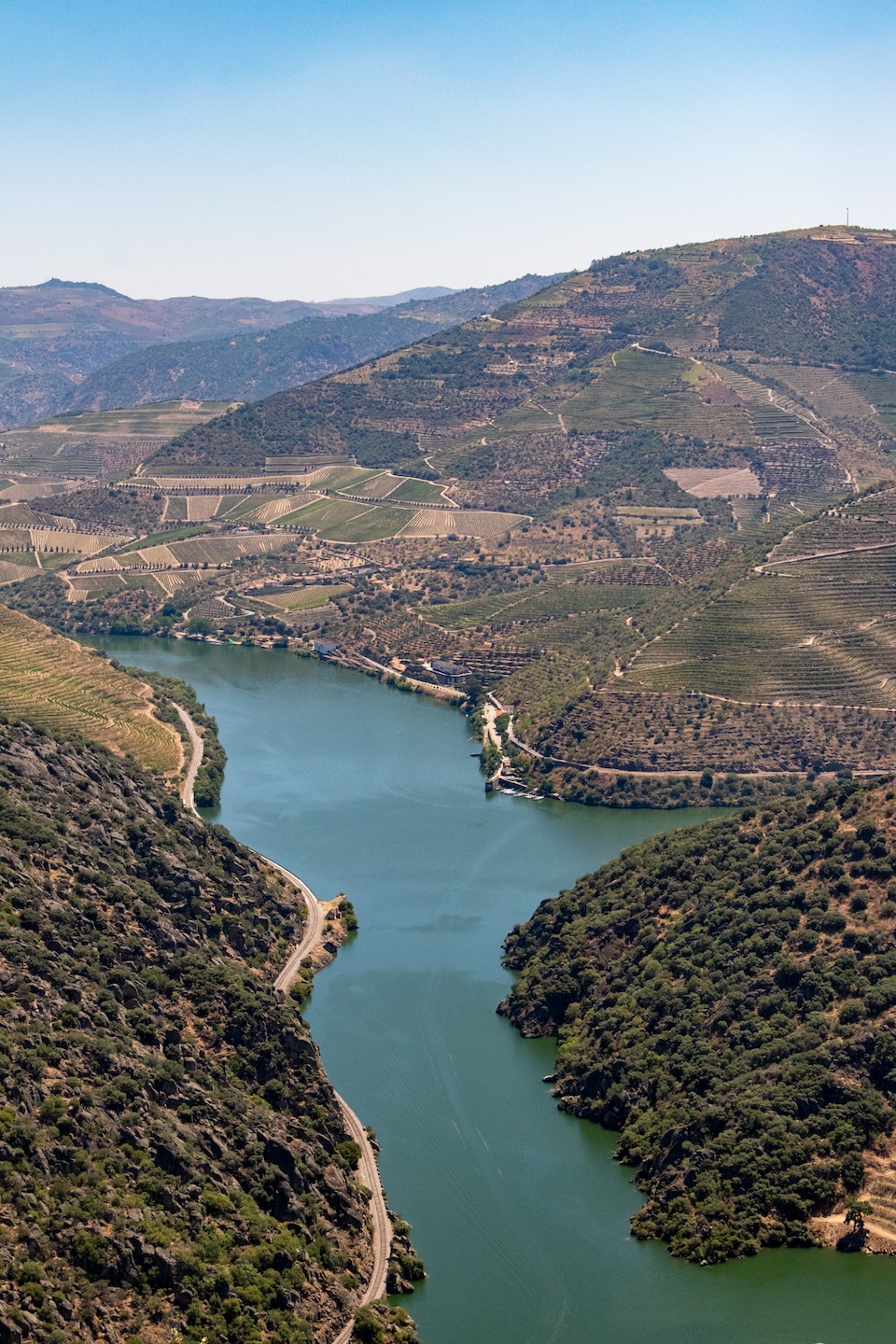
Your pick depends on your budget and schedule, but every option delivers some serious wow factor.
Popular routes include:
- One-day cruises from Porto to Peso da Régua or Pinhão (with train returns)
- Shorter 1-2 hour cruises around Pinhão
The Porto-Peso da Régua and Porto-Pinhão routes serve up amazing views, while the shorter trips are perfect for breaking up a longer stay in the valley.
Heads up: Most cruises only run between April and October because of river maintenance work.
3. Soak in Those Ridiculous Views
To really appreciate the Douro Valley, hit up some of the insane viewpoints that offer panoramic vistas.
During our trip, we checked out spots like São Salvador do Mundo, Casal de Loivos, and Cruz de Ventozelo – each one left us speechless.
The sight of the Douro River winding through terraced vineyards creates postcard–perfect scenes that’ll flood your camera roll. These views alone make northern Portugal worth the trip!
Also worth checking out: Alto de Vargelas and São Leonardo da Galafura. We missed them this time around, but they’re definitely on our list for next visit!
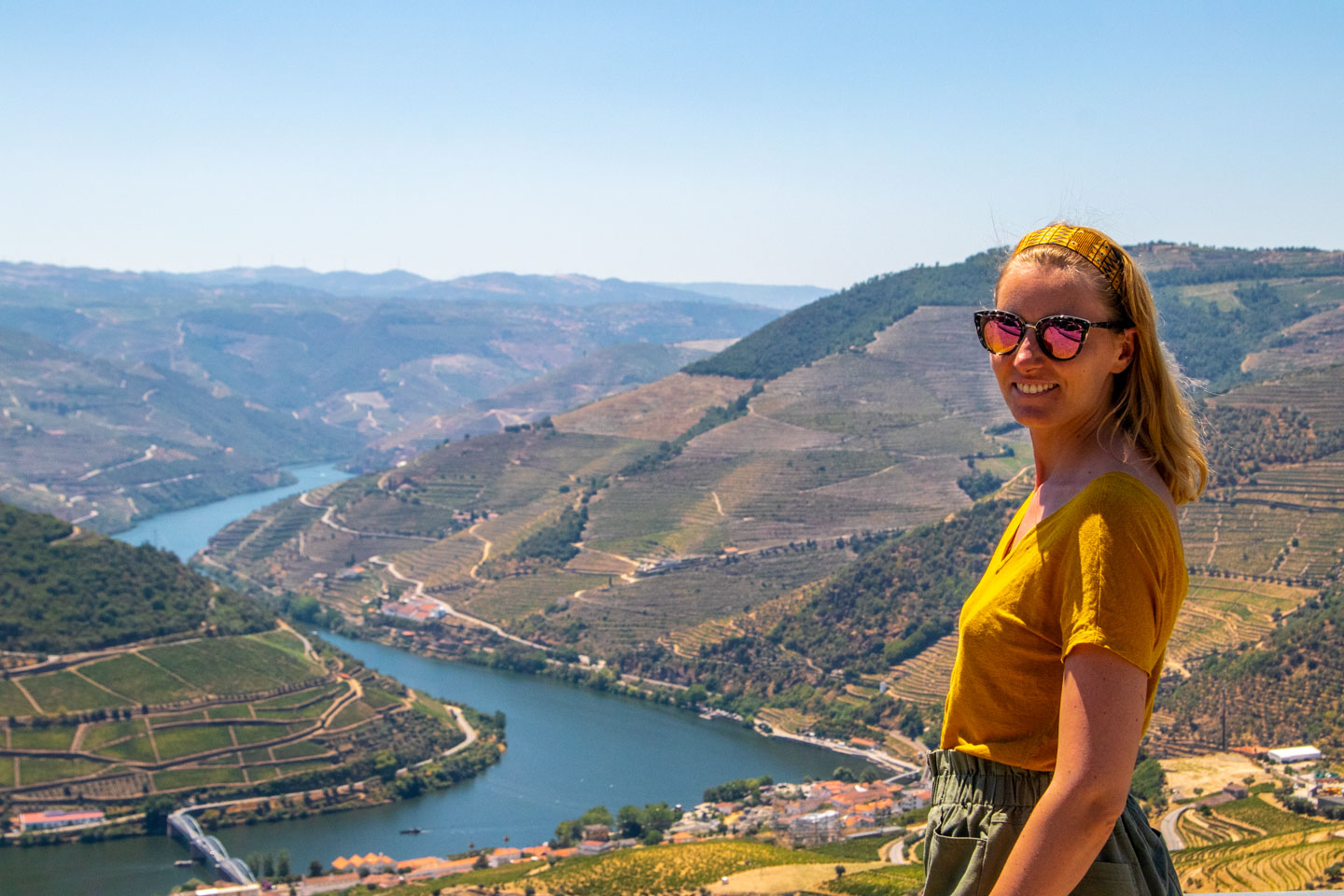
4. Explore Adorable Towns
Another reason to hit up the Douro Valley: its super–cute towns. Pinhão, Lamego, and Peso da Régua are must-sees.
Pinhão, right on the riverbank, has more than just vineyards.
Check out the train station with its gorgeous traditional blue tiles showing harvest scenes, and sample local eats including authentic bacalhau (that’s salt cod).
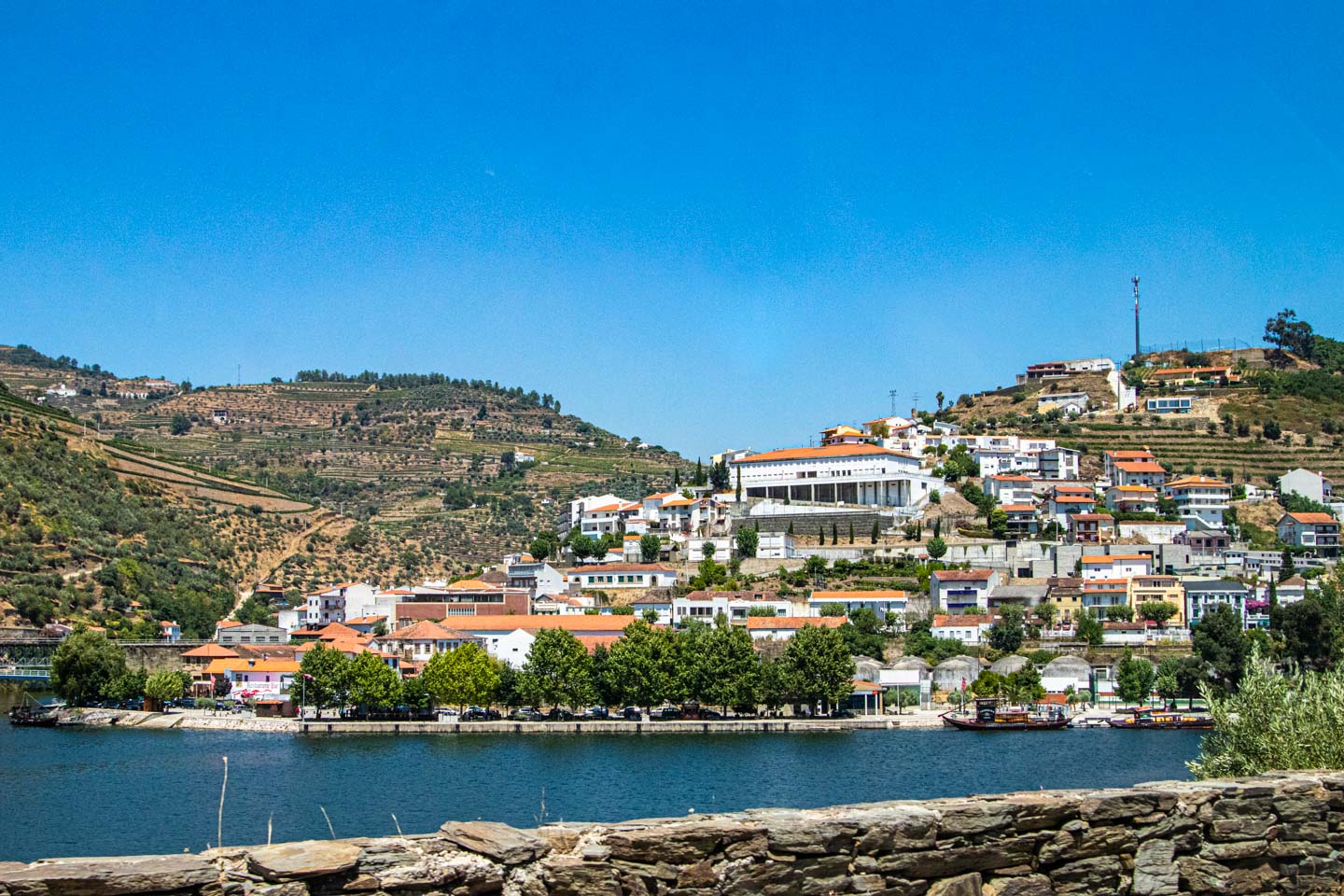
In Lamego, visit the hilltop Church of Nossa Senhora dos Remédios, the medieval cathedral, and old castle ruins.
If you’re into art, hit up the Museu de Lamego, while history and wine buffs will dig the Museu do Douro in Peso da Régua.
While you’re in Peso da Régua, grab a seat at a cozy café for some traditional almond cake (toucinho do céu) or those famous custard tarts (pastéis de nata) – both are stupid good!
5. Ride the Old-School Train
From June through October, you can hop on this historic train between Peso da Régua and Tua.
This awesome century–old train with its five vintage cars makes for an hour-long journey each way that feels like time travel.
As you roll along enjoying the scenery, local performers sing traditional songs, and staff pour glasses of regional port wine. It’s a super fun way to experience the valley’s heritage!
Pro tip: Book your tickets ahead of time (click here) – these trains fill up fast!
6. Go Biking Through Vineyards
Cycling is an epic way to explore the Douro region. The local roads are perfect for biking with jaw–dropping landscapes around every bend.
While many routes feature some serious hills, the views make every uphill push worth it.
The N222 between Peso da Régua and Pinhão is especially gorgeous. Just keep in mind that the hilly terrain makes this better for experienced or intermediate cyclists – not exactly beginner-friendly!
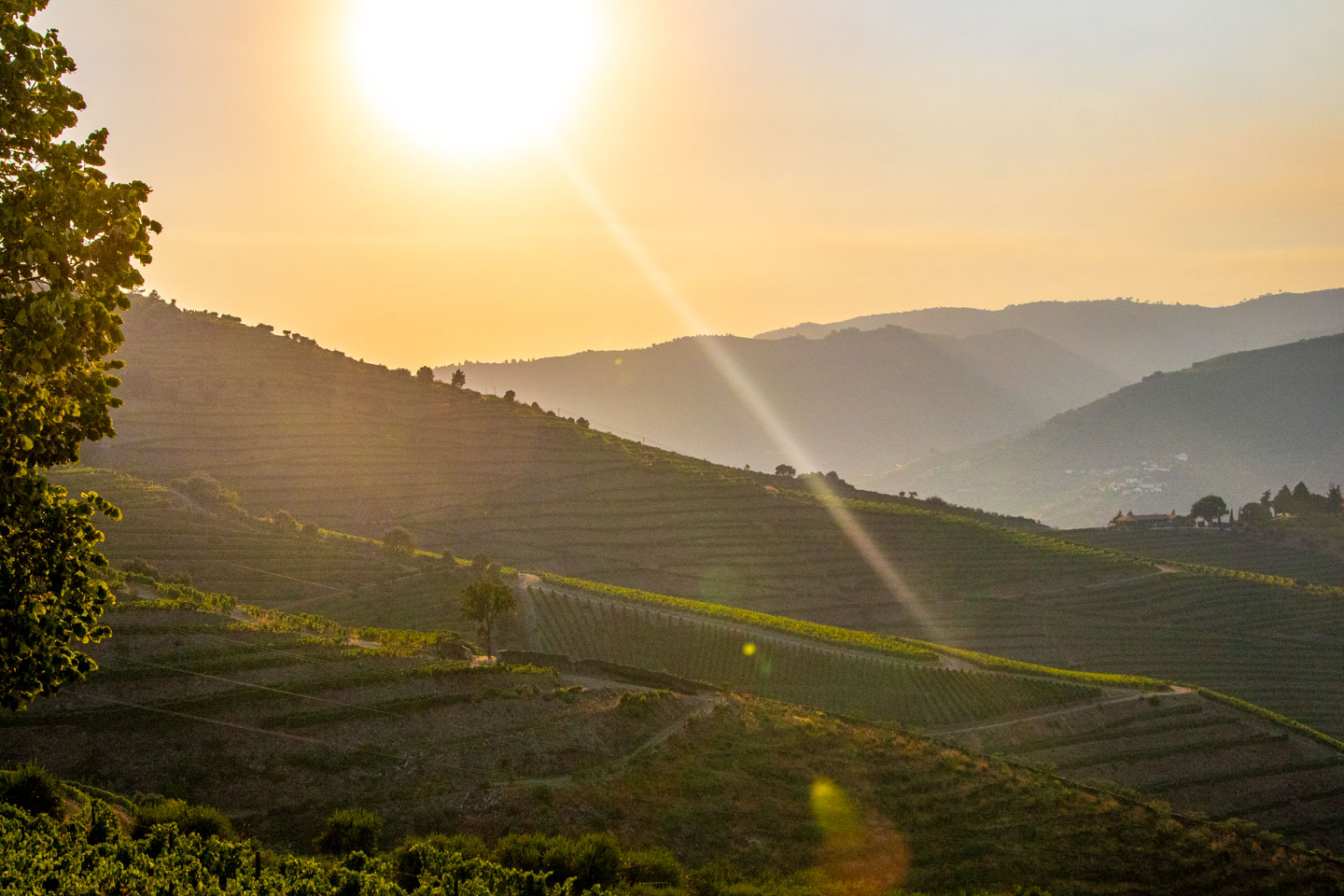
Travel Budget Calculator
Get your free Travel Budget Calculator now and plan your trip without the stress of overspending!
The Ultimate Guide to the Douro Valley: Final Thoughts
The Douro Valley, just a quick 1.5-hour drive from Porto, hits all the right notes for a perfect getaway.
This region has something for literally everyone – wine lovers, countryside seekers, medieval town explorers, and view chasers will all find their happy place here.
Real talk: we think it beats even the charm and character of tourist-packed Tuscany.
If you’re into amazing food, ridiculous scenery, and one-of-a-kind experiences, add Alto Douro to your Portugal plans. Trust me, you’ll have a hard time saying goodbye!
Dig this guide to the Douro Valley? Share it with your travel buddies!
Pin it for later!
Here are more articles you might like:
- 10 Compelling Reasons to Visit Comporta, Portugal
- Your Ultimate Travel Guide to Porto, Portugal (2024)
- A Perfect 1 Day Barcelona Spain Itinerary for First-Timers
- Catalonia Hidden Gems: 10 Places to Visit Beyond Barcelona
- 10 Thrilling Hidden Gems in Europe You Won’t Want to Miss
This article contains affiliate links. If you make a booking through these links, I may earn a commission, supporting this blog. Rest assured, my recommendations are based on honest assessments, and using these links doesn't affect prices for you. Thank you for your support!
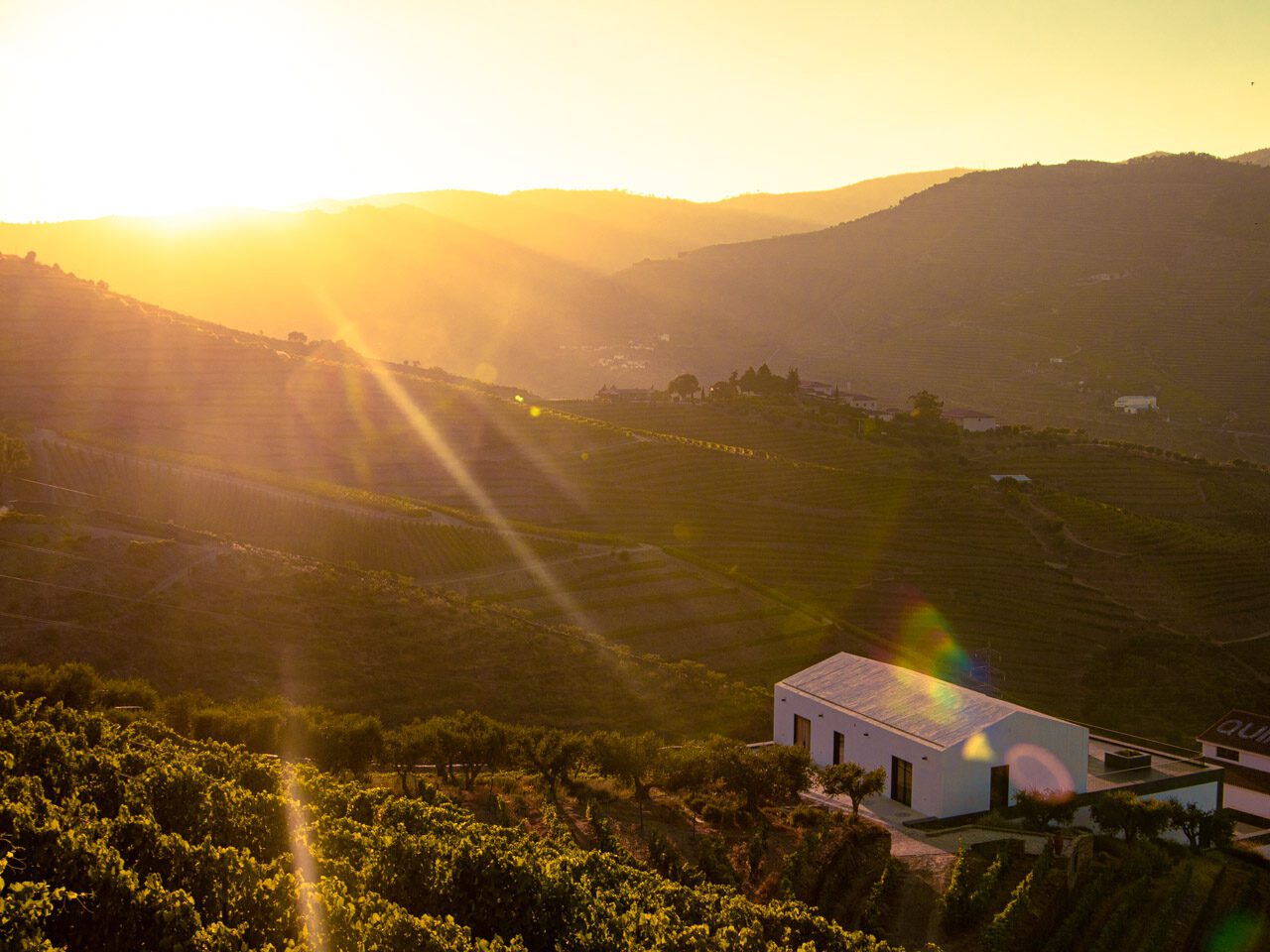

Gosh, the Douro Valley is so beautiful! Thanks for putting this gem on my radar. Just pinned for future inspo 🙂
Thanks, I’m glad you like it! 🙂
This looks so dreamy! Relaxing, beautiful…so many words to describe just from the pictures!
In real it is even better 😉
It looks so pretty, what a great place to relax.
You can relax and enjoy view and vine 🙂
Awww, I love Portugal! It’s my favorite country in Europe! Can’t wait to be back as soon as we got over this pandemic and traveling back home to Europe is possible again.
I wish to get back there soon as well 🙂
I love the Douro Valley! My husband and I went on a boat ride up the Douro years ago when we visited Porto and loved it. Douro wines are incredible too. I hope to make it back there someday soon.
Wow fantastic 🙂 You should go back there and spend even more time 😉
Never thought this will be in Portugal. It looks like a beautiful place to relax.
I was also impressed and surprised 😀
Alto Douro looks very pretty! I must visit when I go to Portugall. I’ll save this for later!
I hope you’ll enjoy it soon 😉
I can’t say that I’ve heard of this area of Portugal before, but it looks absolutely stunning to visit and very chilled too.
It is a perfect place for chillout 😉
Wow, this is so beautiful! I appreciate the history of port wine that your shared and the tips on visiting the local vineyards, thanks!
I’m glad you’ve enjoyed it.
What a dream! This looks like an incredible trip to take. On our radar now!!
😀 It is true hidden gem. Ok maybe not so hidden since I’ve described it ;D
Beeeautiful!
I have visited Porto, but I would love to spend more time in the countryside and the Douro Valley looks heavenly! I like the idea of hiking/cycling then tasting port and some of that incredible Portuguese food.
If you like hiking you can also consider Serra de Estrela region 🙂
Wow Douro Valley looks amazing. I would love to visit and sip on wine during my visit. Portugal has been on my list for so long. Great post and pinning so I remember to visit when I go. Such a great guide!
Thank you 🙂 I’m happy you like it 🙂
You have me wanting to visit Douro Valley so bad! I had planned to go last fall but hoping I get to go in September of 2022 so I can enjoy harvesting. Sipping on port, going for hikes and taking a river cruise all looks amazing!
I keep my fingers crossed so you can visit Douro as you plan 🙂